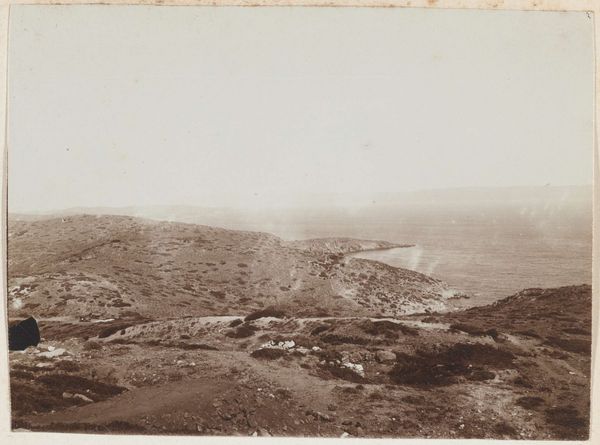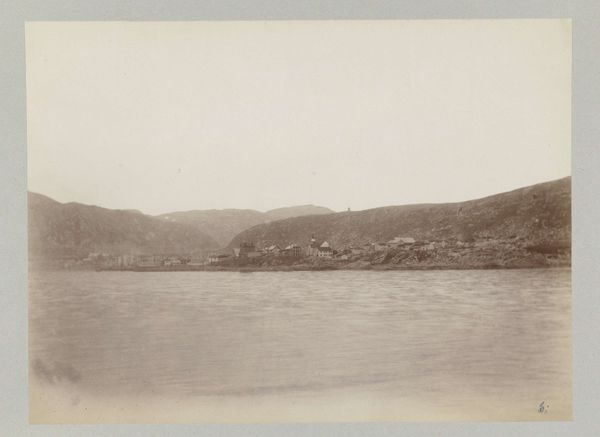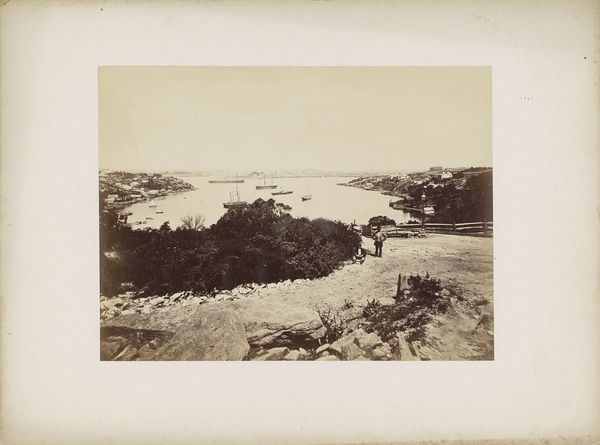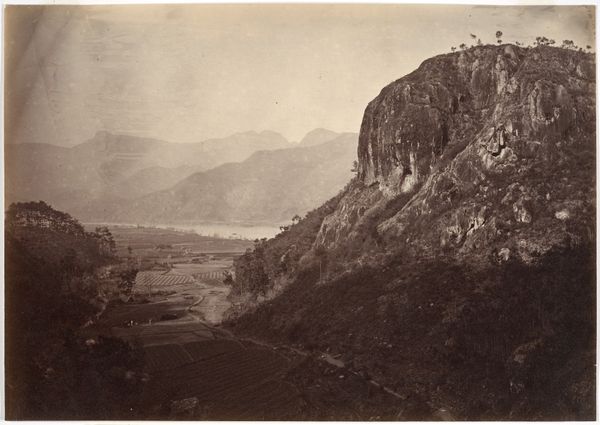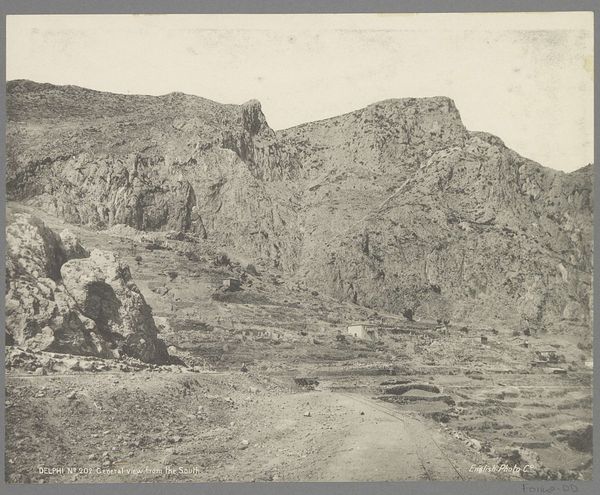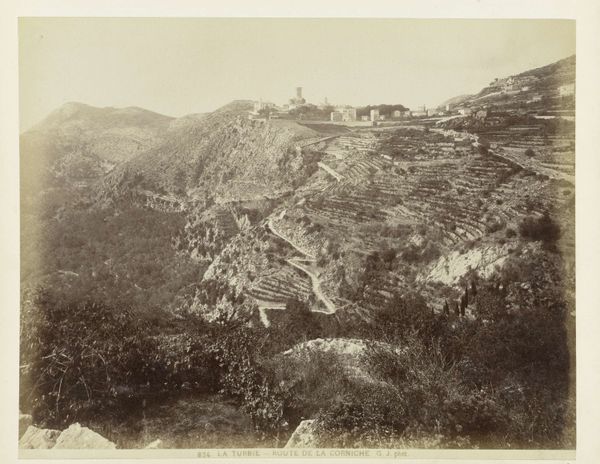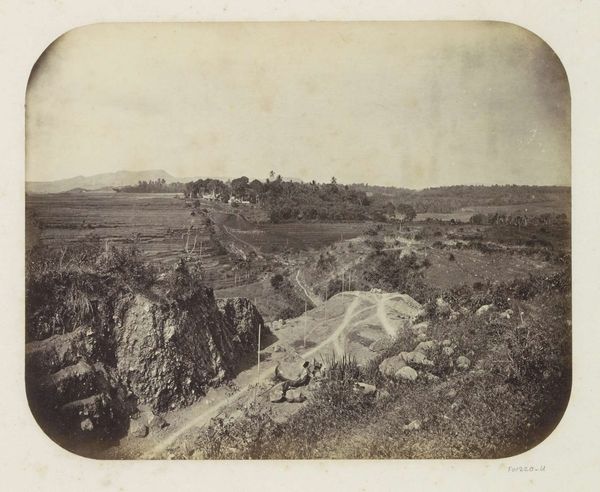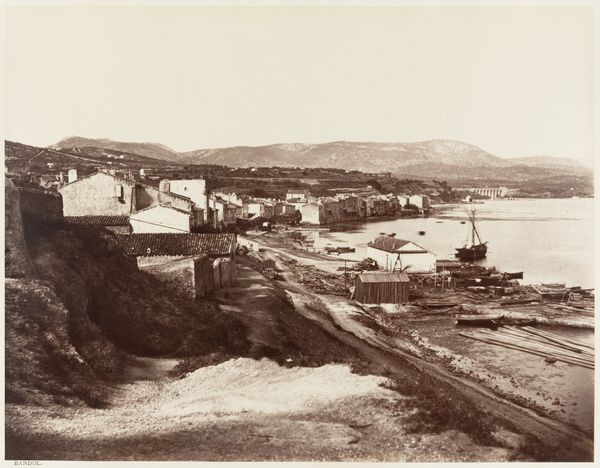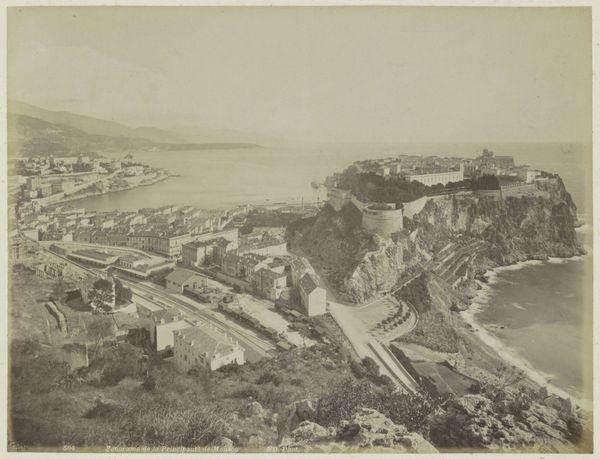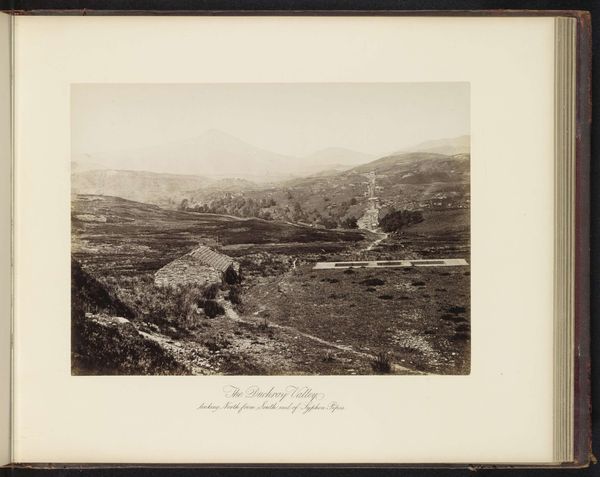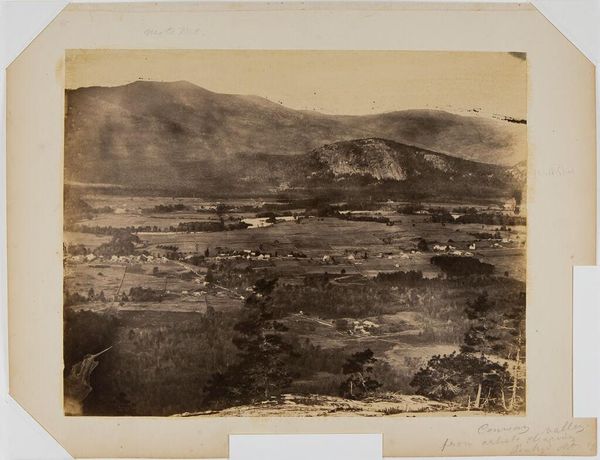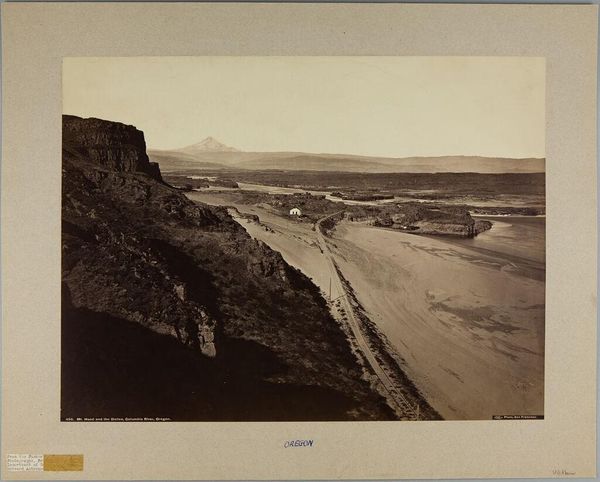
Gezicht op Monaco met rechts de oude vestingstad en op de voorgrond een treinstation c. 1890 - 1900
0:00
0:00
print, photography, albumen-print
# print
#
landscape
#
photography
#
cityscape
#
albumen-print
#
realism
Dimensions: height 206 mm, width 273 mm
Copyright: Rijks Museum: Open Domain
Curator: Here we have an albumen print titled "Gezicht op Monaco met rechts de oude vestingstad en op de voorgrond een treinstation," which roughly translates to "View of Monaco with the old fortified city on the right and a train station in the foreground," created around 1890-1900 by Étienne Neurdein. Editor: My initial impression is this photo oozes faded grandeur. The sepia tones just bathe everything in a nostalgic light, like a forgotten postcard from a well-to-do uncle’s European tour. Curator: Indeed. Albumen prints like this, which were hugely popular, were made using egg whites to bind the photographic chemicals to the paper. It speaks to the industrialized processes making photography accessible but also, consider the sheer number of eggs… the means of production involved a whole network. Editor: Eggs! Can you imagine how many omelets could have been made instead? But you are right. The composition, divided so clearly into layers – foreground’s railway, midground city, distant sea—gives me a sense of ordered societal stratification. You have the transit, the population, and then…the escape. Curator: That stratification is literal as well as societal, of course. Notice how the fortress looms over the rest, a sign of control and authority, yet rendered so picturesque by the technique. The building of cities required materials, labor, trade… each photograph representing consumption as much as it does art. Editor: It feels simultaneously factual and fantastical. Look at the textures created, where the focus isn’t uniform, softening details. It lends a painterly quality, blurring the line between a document and dreamscape. Plus, I can almost smell the sea air, feel the heat rising off those stone buildings… or maybe that's just my own longing for a fancy getaway talking! Curator: That's the persuasive charm of images of leisure—part of their mass appeal at the time, which persists today. Seeing this photograph through a material lens makes us think about both the process of making images but also the broader industrial landscape in which they were created and consumed. Editor: Absolutely. Now I'm wondering about who would be looking at it. Daydreamers? City planners? And were they all hoping to get lucky at the casino? Maybe these images hold all the things you were talking about but were used by everyone in so many different ways!
Comments
No comments
Be the first to comment and join the conversation on the ultimate creative platform.
